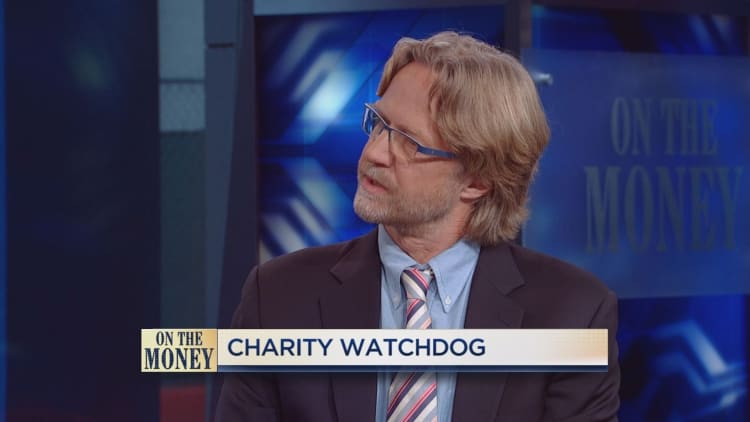
The holiday season is the peak time of the year for charitable giving. With the ability to deduct a qualifying donation from your 2016 taxes, many are inspired by altruism—or self-interest—to write that check before the new year hits.
Giving by individuals comprises the vast majority of contributions received by nonprofit organizations, data from the National Center for Charitable Statistics show. Citing Giving USA figures, the organization estimates that individual giving topped $258 billion in 2014. Whether motivated by charity or the need to cut their tax bill, those donations add up.
"December traditionally is the time that people do the most of their giving," Michael Thatcher, Charity Navigator president and CEO told CNBC's On The Money in an interview. Founded in 2001, Charity Navigator is itself a non-profit organization that acts as a charity watchdog that evaluates nonprofits and charities.
According to Charity Navigator, 31 percent of all annual giving occurs during the month of December alone.
That could be even more so this year, with the possibility of a change in tax rates coming with a new administration. President-Elect Donald Trump and Congressional Republicans are talking about cutting the top income tax rate from the current 39.6 percent, down to perhaps 33 percent.
Thatcher says for those considering making a gift, "now is a very good time. There is certainty with the existing tax laws. There is uncertainty on how things will be in the future," he explained. "So we're seeing a very definite uptick in giving."
If you itemize deductions, a donation in 2016 could be more valuable at a higher tax rate than in 2017, if lower tax rates are implemented during the year.
Thatcher said his group gathers public data on more than 1 million 501(c) charities, gathered from IRS information. He told CNBC that "if you go to the site you can find well over eight thousand charities that are rated between zero and four stars, with four stars being the highest."
In other words, Charity Navigator serves as a ratings system for organizations that do charitable work.
"We have an evaluation system that rates really some of the top and best and biggest charities in the United States," Thatcher said. "We look at the financial health of an organization, and then the accountability and transparency or the governance of that organization, to help you make a good giving decision."
Charity Navigator says 71 percent of all charitable donations are made by individuals. And $2,974 is the average annual amount most households give to charity.
So when donating to a charity, how do you know where the money you're giving is going? And that your gift is doing the most good?
In its Holiday Giving Guide, Charity Navigator suggests after potential donors find a charity that "matches your intentions," then check to assure the charity is financially strong. Also, he suggested looking for "signs of effectiveness" and "evidence of its impact."
Thatcher explained that "our goal is to make intentional giving simpler for people. So that you can identify with a cause area that you are passionate about, and find a charity that actually meets that need."
On the Money airs on CNBC Saturday at 5:30 am ET, or check listings for air times in local markets.



